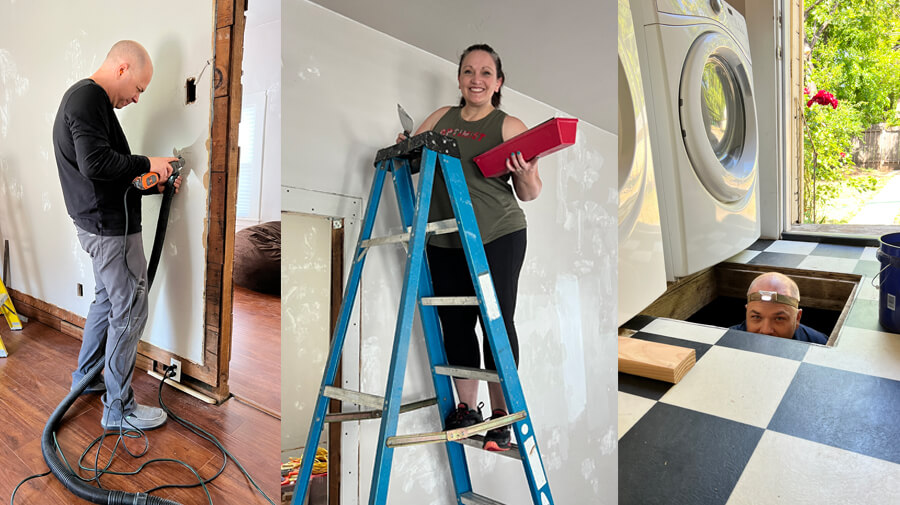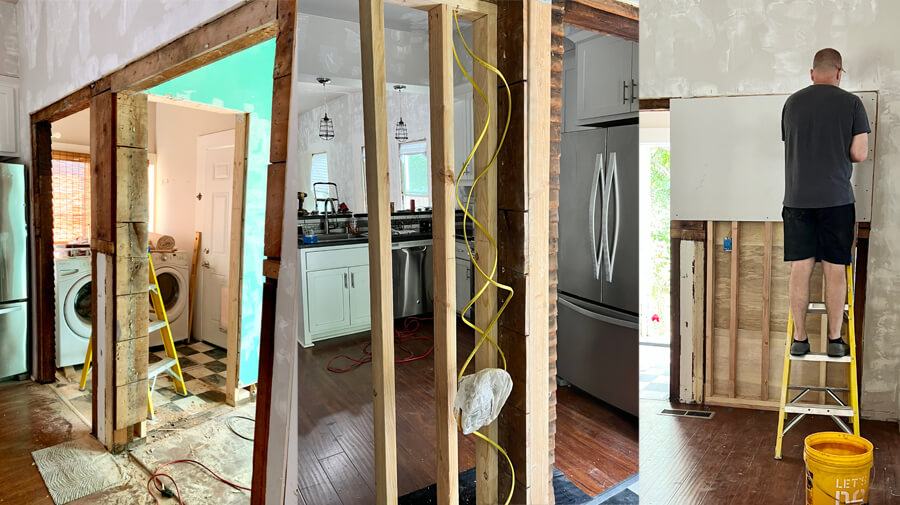A to-do list that helps you make meaningful progress needs specificity and space for unexpected tasks and distractions.

In March, we bought my daughter a house — well, we bought a rental house a few miles from her college that she’ll live in with a roommate starting this fall. It’s a cute butter-yellow 1913 cottage, which also meant it needed some serious cleaning and fixing up.
Renovating a house is a big commitment with a lot of moving parts. And it’s a bit stressful when you’re working against a hard deadline for completion.
When looking at the whole project, it was easy to feel overwhelmed. But then we broke it down by type of task and room, listing:
- Every detail needed to be addressed in each room.
- The supplies and tools that were needed for each task (what we already had vs. what we needed to buy).
- The budget for the renovation and every item we needed to buy.
- Who would do the work and where we wanted to secure help.
- The order in which tasks needed to be completed.
- Specific nuances that needed to be accounted for in scheduling. For example, attic work needed to be done in the mornings because of heat.
That created our master renovation to-do list and plan of action.

We had 24 weeks to complete the renovations. It sounds like a lot of time, but when the house is 90-minutes away, you’re doing nearly all of the work, you work Monday-Friday, and you have vacations and other obligations, it’s not.
Plus, we had to leave room in the schedule for unexpected tasks, like finding out we had to rewire the entire house — every outlet, light switch, and light fixture, and in many cases, move them. We also had to account for other things with friends and family and work, which reduced the number of available workdays.
We’re spending every single available Saturday and Sunday working at the house.
- On Friday, we consult the master to-do list and create our to-do list for Saturday.
- On Saturday night, we assess our progress and make a to-do list for Sunday.
This approach makes a big project so much easier and less overwhelming because you always know exactly what needs to be done to reach your goal and what to do next, and every task is broken down into small, clear, doable steps.
It’s the exact same approach I use to get things done in my freelance business with less stress and make consistent, purposeful progress toward my goals every day. It’s a combination of proper to-do list management and daily wrap-up sessions.
But I’m not perfect. No one is. And imperfection leads to mistakes.
There are two mistakes that derail productivity and cause procrastination. These two mistakes prevent you from getting things done, making progress, and achieving your goals.
Luckily, when you know what they are, you can avoid them altogether.
- Mistake 1: Your Tasks Are Too General
- Mistake 2: Your To-Do Lists Are Too Full
General Tasks Set You Up To Fail
Big broad tasks feel big and hard, and things that feel big and hard get pushed out of the way so easier, faster things can get done. Hello, procrastination.
- When the items on your to-do list are too general, what you need to do isn’t clear.
- When your next step isn’t clear, and I mean totally obvious, you have to work to figure it out.
- When you have to do work — mental, physical, or energetic work — just to figure out what to do, you’re likely going to set it aside to come back to later “when you have time to figure it out.”
Unfortunately, for most people, that magical free time needed to figure it out doesn’t come. You plan to tackle it tomorrow, then push it to the weekend, the next week, the next month, the next quarter, or even the next year.
The trick to skipping this madness is specificity.
When you’re a business owner, especially a freelance business owner, you must be as specific as possible when creating your to-do lists and action plans, breaking down every goal into the smallest, most minute tasks. Yes, you end up with far more to-do list items, but each item listed is smaller, easier, faster, more clear, and more doable.
With smaller and easier items on your to-do list:
- You know exactly what you need to do and they get done faster without procrastination.
- You have more opportunities to check items off your to-do list, which gives you more of those warm, fuzzy, feel-good, gold star moments that I live for.
Plus, action begets action. Every item checked off your list builds more momentum, which makes it easier to keep going and stay on track with your freelancing goals.
Home Renovation Example:
A general home renovation to-do that simply says “redo electrical systems” isn’t very helpful. But breaking it down, room by room into smaller tasks makes it easier. For example, our electrical to-do list for one bedroom looked something like this:
- Take down and throw away the ceiling fan.
- Cut hole for new ceiling fan in the center of the room.
- Add bracing in attic for the new ceiling fan.
- Rewire ceiling fan and install new electrical box.
- Patch the ceiling drywall.
- Install temporary light bulb.
- Cut holes for new light switch positioning.
- Cut holes to move outlets out of the baseboard.
- Rewire light switches and outlets.
- Install new ceiling fan and light.
- Install new electrical boxes, outlets, and light switches.
- Patch the drywall and baseboard.

Content Creation Example:
Skip a general to-do like “write a blog post” and instead, break it down into smaller, easier tasks:
- Identify category of content.
- Choose blog post topic.
- Perform keyword research.
- Brainstorm key goals and key takeaways for blog post.
- Outline blog post.
- Research stats and references for blog post.
- Identify internal link opportunities for blog post.
- Write blog post.
- Find/create images for blog post.
- Add blog post to website and format.
- Optimize blog post.
- Publish blog post.
Again, this approach means more to-do list items. But it’s literally the exact same amount of work. The only difference is in how you document it and plan it.
An Overfull To-Do List Sets You Up To Fail
Working an eight-hour day doesn’t mean working eight hours.
Within those eight hours, you have conversations, breaks, meals, meetings, administrative work, and other activities. You also have unexpected, unscheduled tasks and distractions that will pop up and demand your attention.
- If you consider that most people are only really productive for four hours each day, a to-do list that takes eight hours to finish is not realistic.
- When you also consider that most of us overestimate what we can get done and underestimate how long it will take, the reality of actually completing that to-do list is even bleaker.
This is why you may be working nights and weekends to fulfill your obligations and get everything done, why you’re constantly trying to multitask but still not getting ahead, and why you may always feel behind and struggle to get a handle on everything you need to do.
Overfilling your to-do list sets you up to fail and feel like crap.
It sets you up to feel disappointed and frustrated — to look at your unfinished to-do list and feel like you didn’t work hard enough or do enough — and that’s not healthy.
That’s why I use a two-part to-do list management system, with a master to-do list and daily to-do lists, and why the tasks in my daily to-do lists only account for about four or five hours of work.
With this approach:
- My to-do lists are doable and I finish everything every day.
- Checking off every item during my daily wrap-up feels amazing.
- That sense of accomplishment provides positive reinforcement and encouragement to keep moving forward.
- I have time to deal with anything unexpected that comes my way without feeling stressed or freaking out about fitting it into a jam-packed schedule.
Whether we’re planning a day of work for the renovation or I’m planning a day of work for my business, I set myself up for success and celebration, not frustration and disappointment. And I encourage you to do the same. It makes all the difference when it comes to feeling great about your business, improving productivity, staying on track with your goals, and building the positive momentum you need to keep going and chasing your freelance goals.
